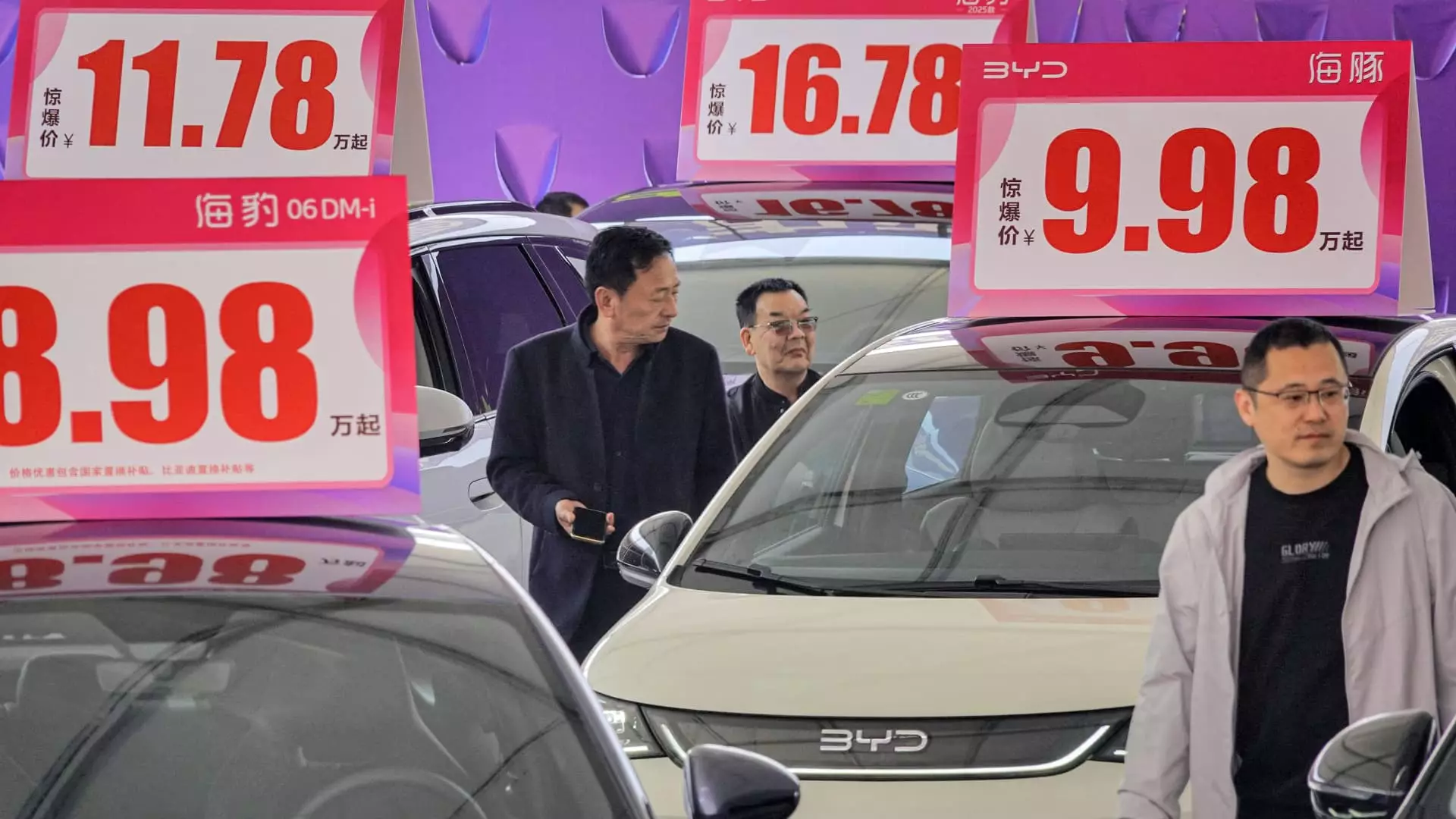The electric vehicle (EV) market in China is undergoing a seismic shift with palpable consequences reverberating through both the domestic economy and the global automotive landscape. BYD, an industry colossus, has sparked a fierce price war with staggering discounts that have sent ripples of anxiety throughout the sector. Reports of reductions exceeding 30% on a slew of their budget-friendly models, including the budget Seagull compact car now priced at 55,800 yuan (around $7,750), are sending shockwaves that traditional car manufacturers struggle to absorb. This situation stands as a testament not only to BYD’s ambition but also to the fraying fabric of competition within the industry, where even the slightest pressures can provoke larger ramifications.
The Shockwaves of Price Cuts
Industry analysts like Zhong Shi have suggested that this aggressive pricing strategy has left many players feeling unnerved. With smaller automakers quaking in their boots, the landscape appears ripe for potential consolidation. The electric car revolution, long viewed as a promising opportunity to invigorate an otherwise sluggish economy, now risks veering into a chaotic scramble that threatens to destabilize countless enterprises. The price cuts are not merely consumer-friendly measures; they are indicative of a structural crisis within an industry that, despite its promises of growth and innovation, is becoming increasingly prone to volatility.
Amidst faltering economic indicators, including tepid consumer demand, BYD’s price slashes might appear counterintuitive, preying on the very foundation of market stability. Market forces are suggesting that a supply-demand imbalance has led to worsening deflation, as highlighted by Morgan Stanley’s Chief China Economist Robin Xing. It’s disheartening to witness a situation that should propel new technology instead mirror past economic misconduct seen in industries like real estate, where false expectations and bloated valuations led to catastrophic outcomes.
History Repeating Itself?
The warnings echoing from the likes of Great Wall Motors Chairman Wei Jianjun about a possible “Evergrande” scenario within the auto industry serve as a bitter reminder of how prior market excesses can culminate in disaster. There’s a darker side to this fervent push for market supremacy: the struggle for survival among smaller automakers. Just as the housing bubble burst revealed the sheer negligence in real estate, the auto sector could be heading toward a reckoning where market saturation leaves a trail of casualties.
Interestingly, while domestic production flourishes, the implications for international competitors are becoming starkly apparent. Tariffs from the European Union and United States against Chinese-made electric vehicles manifest a protective response to safeguard their industries from aggressive competition. China’s electric vehicle exports have met roadblocks, not merely from tariffs but also from the negative perception surrounding Chinese goods plagued by concerns over substandard practices and government subsidies entrenching their market dominance.
A Double-Edged Sword
While discounted prices were once touted as a boon for consumers, they now present a paradox. For consumers, a surplus of subpar options flooding the market could mean short-term savings at the expense of long-term quality and trust. Analysts foresee that new entrants to the electric car space, bolstered by government subsidies, are treading into murky waters reminiscent of early 2000s dot-com excesses—where quantity was celebrated over quality. Pushing trends like the seemingly inflated double-digit sales growth in EVs, which merely cannibalizes traditional car sales, reflects an industry desperately trying to innovate yet falling into the trap of reckless competition.
According to a Nomura report, significant price cuts—21% for battery-only cars and 27% for hybrids—have exacerbated market fragmentation and weakened profitability, which in the long term could threaten manufacturers’ viability. The disparities between China and U.S. automotive costs practically exemplify a market in disarray: while the average retail price of a new car in the U.S. has slightly increased, China’s price war suggests a desperate scramble for consumer attention instead of creating value.
Opportunities or Illusions?
Nevertheless, there may be a silver lining—an opportunity for innovation. The increasing push for advanced features such as driver-assist systems being offered for free speaks to a potential shift in consumer expectations. Companies like BYD and Zeekr are altering the narrative around value-added services, eschewing additional costs to enhance driver experience. Ironically, this could teach valuable lessons to western companies about understanding consumer desires versus merely maximizing profits through incremental increases.
As discussions of “involution” intensify in political circles, the call for a more productive competition surfaces, highlighting the need to reevaluate the very foundations of industry practices. The growth narrative of China’s electric car segment is compelling; however, it must not be underpinned by harmful, unsustainable methods. As Chinese innovation continues forging ahead, the balance between competitive pricing and cultivating an enduring, ethical industry standard will be crucial to settling a tumultuous auto market on more solid ground.

